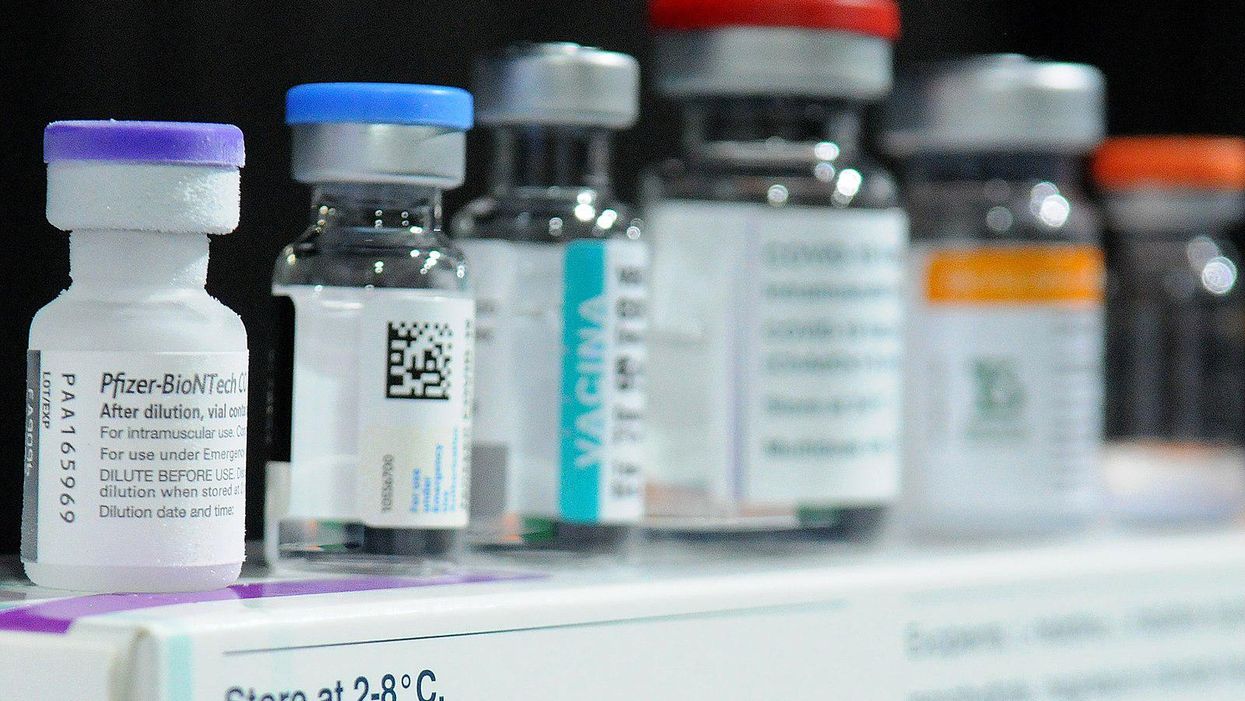Why Those Leopard II Tanks Are So Vital To Ukraine (And So Menacing To Russia)
This is the latest report in my months-long coverage of the war in Ukraine. For more reporting like this, and to read my screeds about the reprehensible Republican Party, please consider becoming a paid subscriber.
The Associated Press headlined the big meeting of the Ukraine Defense Contact Group in Ramstein, Germany, last Friday this way: “Ukraine will have to wait longer to find out if it will get advanced German-made battle tanks.” The problem was Germany, which manufactures and exports the tanks. They had not yet agreed to allow European countries to send the Leopard II tanks to Ukraine.
Yesterday the AP led with this: “The German government will not object if Poland decides to send Leopard II battle tanks to Ukraine, Germany’s top diplomat said Sunday.” That’s newspeak for Germany caving to international pressure that was poured on in buckets last week after Germany initially stuck to its policy of not allowing shipment of its tanks to Ukraine to fight Russians on the front lines. German Foreign Minister Annalena Baerbock, on a French television show, said Sunday that Poland had not formally asked for permission to ship the Leopard tanks, but confirmed, “if we were asked, we would not stand in the way.”
Poland announced today that the government would ask permission to send the tanks but added that they had already planned to supply the advanced battlefield weapons even if not given permission.
In a BBC TV interview today, Ukraine's Foreign Minister Dmytro Kuleba put out an appeal to all European countries with Leopard tanks in their arsenals “to immediately, officially request the German government to allow delivery of these tanks to Ukraine."
The way Poland has been talking, it wouldn’t surprise me if Poland was not already secretly training Ukrainian tankers who are qualified to drive and shoot Russian T-72 tanks in their arsenal, which they have captured a good number of from Russians on the battlefield.
The Leopard II is a modern tank with multi-layered armor and a 120 mm smooth-bore main gun. The tank is powered by a 1500 HP 12-cylinder diesel engine, can reach speeds of 40 MPH, and has a 300-mile range, which is fairly extraordinary for a main battle tank. The Leopard has a gyroscopically balanced main gun, which means it can fire on the move. The tank has night-vision aiming sights, laser range-finders, and two co-axial machine guns. The design of the Leopard’s main gun allows it to fire several different kinds of tank ammunition produced by multiple allied countries.
Germany has said that it designed the Leopard II tank so it can be driven and fired by citizen-soldiers, their version of our National Guard. This means that the training to use the Leopard is not as lengthy or complicated as what is necessary for the U.S.-made Abrams tanks.
One fixed truth about the development of tanks is that as they have gotten more complicated and additional requirements have been put on them, they have become more likely to break down, the distance they can travel before needing to be refueled is reduced, the training necessary to be able to deploy them in battle becomes longer, and there are stiffer requirements for soldiers to become tankers.
Older tanks like the American M-60 used in the Vietnam era were nearly self-explanatory. You could get into the gunner seat and with less than an hour of instruction, learn to shoot the thing. Accuracy at first wouldn’t be the best but driving and firing tanks is like anything else: you get better with practice. When I was a cadet at West Point, I was assigned as a so-called “3rd Lieutenant” to spend the better part of one summer as an executive officer of an armor advanced individual training company at Fort Knox, Kentucky. Out of 160 guys in the company, 140 of them had been drafted during Project 100,000, MacNamara’s cannon-fodder experiment which lowered the IQ level necessary for service, removed the requirement for a high school diploma, and gave county and state prisoners with less than two years to serve on their sentences the option to get out early if they “volunteered” for the draft.
Those were the guys I was in charge of teaching to drive and shoot tanks. I can tell you two things about that training company: One, no one was killed in training, and two, every soldier in that company graduated and was qualified at least minimally to drive and shoot the M-60 tank.
But the M-60 was a primitive weapons system compared to today’s tanks. The range-finder was optical, meaning as a tank commander, you looked through a scope and dialed knobs to match two lines to establish the range, and then you transmitted the range to the gunner over the radio, who dialed in the range on his sight, found the target in his sights and fired. Sometimes, those soldiers even hit what they were shooting at. Driving was done with two sticks that ran the left and right tracks, and gas and brake pedals. There was a transmission shifter that put the transmission in “go” and “idle,” and that was pretty much it. If you can drive a zero-turn lawn mower, you could drive an M-60.
The Leopard is much more complicated when it comes to firing its main gun, but driving it is very similar to the old M-60. Given what I can find out about the Leopard II, if Ukraine has soldiers who can handle the Russian T-72 tank, less than a week will be necessary to bring them up to speed on the Leopard II.
Which is great news for Ukraine. If other European nations, as expected, follow Poland’s lead and ship some of their Leopard II tanks, depending on how long it takes to get them there, Ukraine could have new Leopard tank units ready to go by March.
Germany has been reluctant to send its tanks or approve their shipment by other European nations because of “German culture,” according to multiple stories over the last few days. That’s shorthand for Germany being reluctant to get involved militarily in any conflict on the European continent unless their country is threatened, a hangover from German aggression in World War II. But that war ended almost 80 years ago. Everybody gets it that Germany has managed to cobble together what passes for collective shame over Nazism and the deaths they caused on and off the battlefield during that war. It looks like Germany, or more specifically, its politicians, are taking a deep breath and entering the real world. They’ve got these modern and deadly weapons systems. It’s time they used them for something other than decorative purposes in motor pools waiting for someone to attack them.
The Russians, chiefly in the person of State Duma Chairman Vyacheslav Volodin, have been making their usual threatening noises, warning the rest of the world to leave them alone so they can continue murdering Ukrainian civilians at will. “Supplies of offensive weapons to the Kyiv regime would lead to a global catastrophe,” Volodin said. Dimitri Medvedev, a former Russian president, chimed in by threatening to form a military alliance with "the nations that are fed up with the Americans and a pack of their castrated dogs."
Good luck with that, Dimitri. My advice would be to train your unlucky conscripts to duck.
Lucian K. Truscott IV, a graduate of West Point, has had a 50-year career as a journalist, novelist, and screenwriter. He has covered Watergate, the Stonewall riots, and wars in Lebanon, Iraq, and Afghanistan. He is also the author of five bestselling novels. You can subscribe to his daily columns at luciantruscott.substack.com and follow him on Twitter @LucianKTruscott and on Facebook at Lucian K. Truscott IV.
Please consider subscribing to Lucian Truscott Newsletter, from which this is reprinted with permission.




